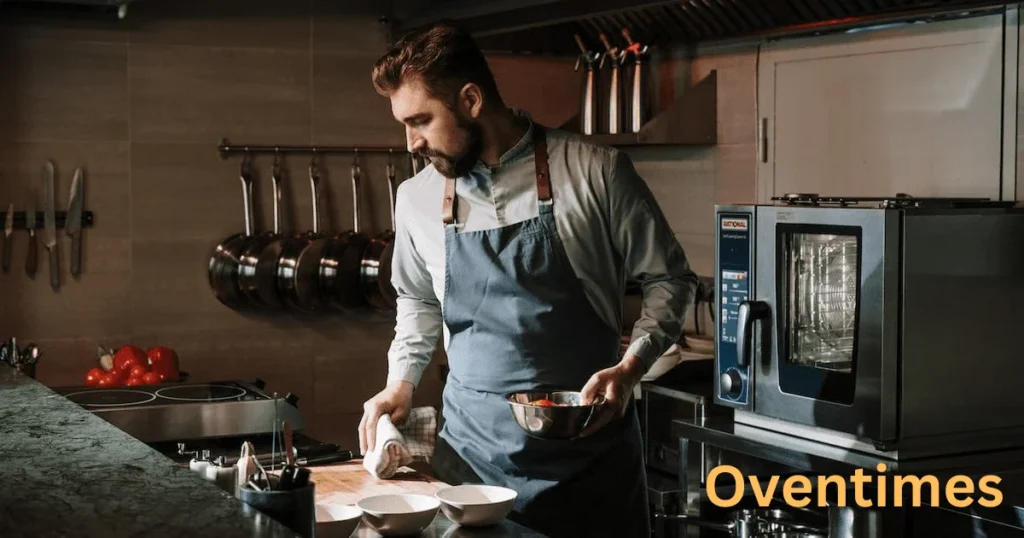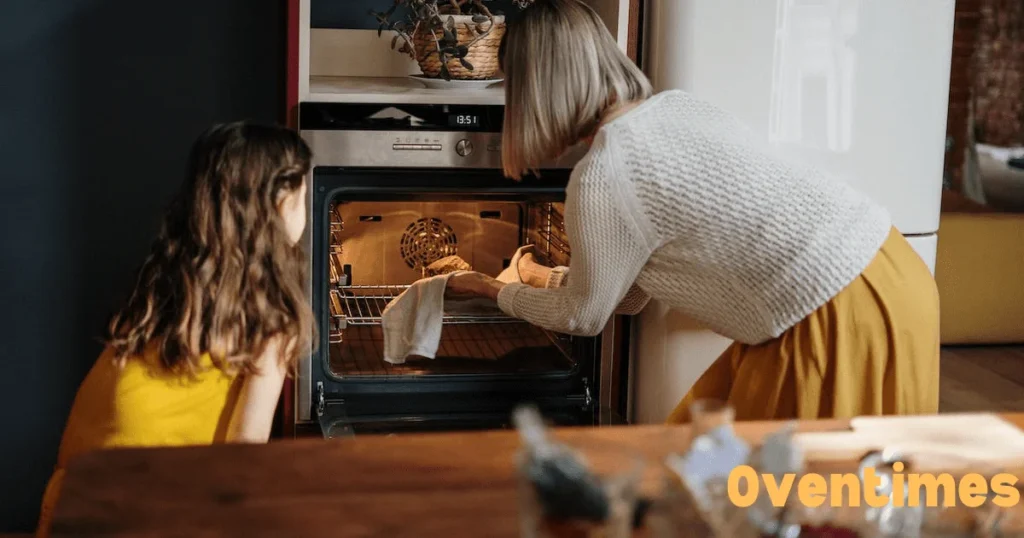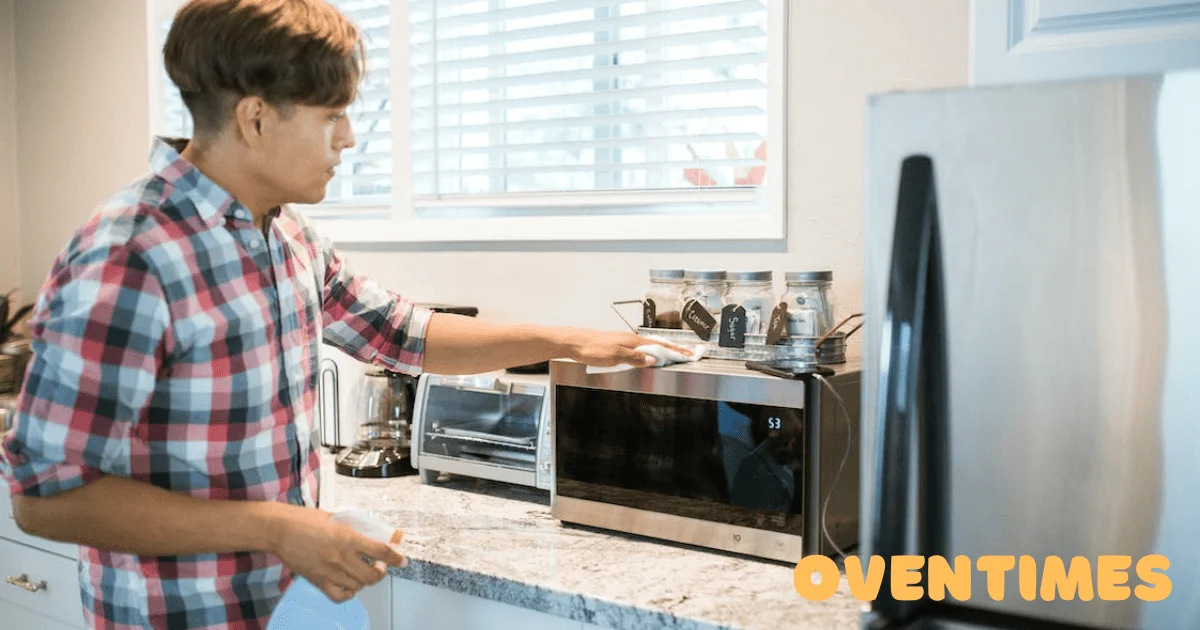Aluminum foil can be a useful tool in cooking, but there are some important considerations when using it in a convection toaster oven.
In this comprehensive guide, we’ll explore the pros and cons of using foil in a convection oven, proper usage tips, and alternatives.
What is a Convection Toaster Oven and How Does it Work?

A convection toaster oven is a small appliance that combines features of both a traditional toaster oven and a convection oven.
It uses a fan to circulate hot air around food, allowing for fast, even cooking using convection heating technology.
Some key features of convection toaster ovens:
- Smaller and more compact than a full-sized oven
- Heats up faster, cooks faster than conventional ovens
- Uses a fan to distribute hot air around food
- Settings for bake, broil, toast, convection bake, convection broil
- Temperatures up to 450°F or higher
- Can accommodate small batches of food
- Options like auto shut-off and interior lighting
The convection fan circulates the hot air, removing cold zones and evenly cooking foods. This allows convection ovens to cook food up to 25-30% faster while producing crispy exteriors and tender interiors. The increased air circulation also means convection ovens don’t require preheating for most tasks.
Is It Safe to Use Aluminum Foil in a Convection Oven?
Aluminum foil can be used in convection ovens, but there are some potential risks:
Fire Hazard
The circulating fan can cause lightweight foil to flap around and potentially contact heating elements. This creates a fire hazard.
Heat Circulation Issues
Foil can disrupt airflow and cause uneven heating or cooking. Areas covered by foil will be shielded from the circulating hot air.
Damage to the Appliance
Loose foil pieces could get sucked into the convection fan, damaging the blades and motor. Melted foil could also contaminate the interior.
So while it may seem convenient, foil is generally not recommended for convection cooking by most brands. There are safer options to achieve the same effects.
Proper Usage Tips If Using Foil
If you do opt to use aluminum foil in your convection toaster oven, follow these tips to reduce risks:
- Avoid large sheets of foil, which can blow around easily. Instead, make foil packets by fully enclosing food.
- Foil packets should be tightly sealed with no openings. Crimp and fold in the edges to prevent billowing.
- Ensure foil packets are placed carefully on racks and can’t shift around. Use oven-safe pans or dishes to contain them.
- Avoid putting foil on oven bottom or near heating elements. Keep 1-2 inches of clearance.
- No peeking! Don’t open the door to check on foil packets, which lets hot air escape.
- Remove finished foil packets promptly when cooking is done. Don’t leave foil inside once the oven is off and cooling down.
- Double check that no stray pieces of foil remain after removing packets.
- Clean out any debris, crumbs, or melted foil after use to keep oven interior clean.
Following these precautions will minimize risks and allow you to successfully use foil packets in your convection toaster oven. Always monitor closely and remove foil right after cooking.
Alternative Solutions to Using Foil
While foil can be used carefully in a convection oven, there are many other options that don’t come with the same risks:
Oven-Safe Cookware
Use oven-safe pans, dishes, baking sheets, etc. Instead of wrapping in foil, place food in proper cookware first. This contains the food safely and avoids issues with loose foil.
Parchment Paper or Foil
Parchment paper and oven-safe silicone mats provide coverage similar to foil but are much safer choices that can remain inside a hot oven.
Tent with Foil
For items like poultry or roasts, you can lightly tent them with foil just during the first portion of cooking to retain moisture. Remove the foil for the remainder of the cooking time.
Oven Bags
Heat-resistant oven cooking bags are a great foil alternative. They allow heat to circulate while retaining moisture.
Bake Directly on Racks
For items like oven fries, bake directly on the oven racks rather than using foil lined pans. The circulating air will cook foods evenly.
With a variety of solutions available, it’s easy to avoid regular use of foil and enjoy safe convection cooking. Consider the alternatives and reserve foil for specialized uses only.
Tips for Cooking Different Foods in a Convection Oven Without Foil

Cooking in a convection toaster oven without foil may take some adjustment. Here are tips for achieving great results with different foods:
Meat
- Use broil setting and convection broil for crispy, browned exteriors on meats while retaining moisture.
- Roast meats directly on oven racks set over pans to catch drippings.
- Brush roasts with oil/glaze toward the end only to avoid burning.
- Cook meats uncovered; tenting with foil is okay briefly at start only.
Vegetables
- Toss vegetables lightly in oil before roasting for crispiness – no foil lining needed.
- Roast veggies in a single layer on sheets/pans; overcrowding causes steaming.
- Stir vegetables halfway through roasting for even browning.
Frozen Foods
- Use pans or oven-safe dishes instead of foil with frozen prepared foods.
- Additional time is rarely needed – convection ovens cook frozen foods well.
- Follow package instructions, adjusting for shorter convection times if needed.
Baking
- Use parchment paper or silicone mats on baking sheets instead of foil.
- Prevent burning by reducing temperature 25°F from recipe recommendations.
- Check sooner than bake times given for conventional ovens.
Conclusion
While aluminum foil can technically be used in a convection toaster oven, it carries a range of risks that make it best avoided. The loose foil can cause issues like interrupting heat flow, burning from contact with the heating elements, or being sucked into the fan.
Luckily, there are many foil-free alternatives that provide the same benefits without the hassle! Using proper oven-safe cookware and liners like parchment paper avoids the risks of foil. With some adjustment to settings and cook times, you can absolutely roast, bake, and broil foods to perfection in your convection oven without resorting to aluminum foil.
Play it safe by ditching the foil and using appropriate convection cooking methods. Your dishes will turn out amazing, and you’ll avoid potential appliance damage or even fire hazards. Follow the tips provided above for properly maximizing your convection toaster oven without ever having to use foil.
Frequently Asked Questions
Here are some frequently asked question given below:
Is it safe to cover an entire oven rack with foil in a convection oven?
No, it is not recommended to cover entire racks with foil. The large sheets can easily blow around and potentially into heating elements or the fan, causing a fire hazard or damage. It’s best to avoid large sheets of foil.
Can I use foil liners or pie shields in my convection oven?
It’s safest to avoid foil liners or pie shields. The foil can interfere with airflow or accidentally contact heating elements. Use oven-safe metal, glass, or ceramic pans instead when baking.
What temperature is unsafe to use foil at in a convection oven?
There is no universally safe temperature, since factors like foil containment and oven placement also matter. But in general, avoid using foil at higher convection temperatures above 375°F, when it’s more likely to melt from intense heat.
Is heavy duty or regular aluminum foil better for convection ovens?
Heavy duty foil is preferable, since it’s less likely to blow around or melt under high heat. However, even heavy foil carries risks like interrupting air circulation and should still be avoided in favor of alternatives.
Can I use just a small piece of foil to cover part of a dish?
It’s best to avoid using any loose foil to cover portions of a dish. The foil could move around, cause uneven heating, or other issues. Fully wrap foods in sealed foil packets, or use an oven-safe lid or alternative cover instead.
Can foil be used on 1 or 2 sides of a pan only in a convection oven?
No, foil should fully wrap and seal food rather than just lining 1-2 sides of a pan. The loose pieces of foil can still cause circulating air flow problems. Fully wrapped foil packets are safer as the foil stays contained.
